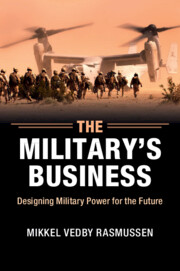6 - Designer wars
Published online by Cambridge University Press: 05 March 2015
Summary
The modern military system is defined by four elements: (i) combined arms operations, (ii) capital-intensive forces, (iii) focus on ‘the tail’ and (iv) the flow of information that allows for command and control. Like any organisational principle, the modern military system was created to meet a demand. Modern military technologies created a bloody stalemate on the western front during the First World War. The modern military system organised them into a technology of deployment that was able to break the stalemate and produce decisive results. Since the Second World War, that system has become more and more sophisticated and less and less effective. ‘Simplicity and flexibility, both of them vital principles of war, were lost’, as military historian Martin van Creveld observes, ‘consequently, though today's Abrams and Leopards and Challengers and T72s are individually much more powerful than the Shermans and Tigers and Cruisers and T34s of World War II, as instruments of war and conquest they may be less effective’. When applied in all its intricacy, the modern military system provides a dazzling display of force, as was the case with the American invasion of Iraq in 2003. Yet the very perfection to which the United States military has driven the use of the modern system demonstrates the paradox of military power. The ability of armed forces to force a decisive result in a dispute does not necessarily correspond to an ability to bring about the desired outcome. The subsequent insurgency in Iraq after the 2003 invasion testifies as much. The fact is that the modern military system seems increasingly unable to deliver decisive outcomes at the same time as the costs of maintaining the forces to operate the system are increasing. It is important to note that these costs are driven by factors inherent to the system. The tail is too large, procurement too expensive and the costs of operations and maintenance too large as well.
- Type
- Chapter
- Information
- The Military's BusinessDesigning Military Power for the Future, pp. 152 - 197Publisher: Cambridge University PressPrint publication year: 2015



